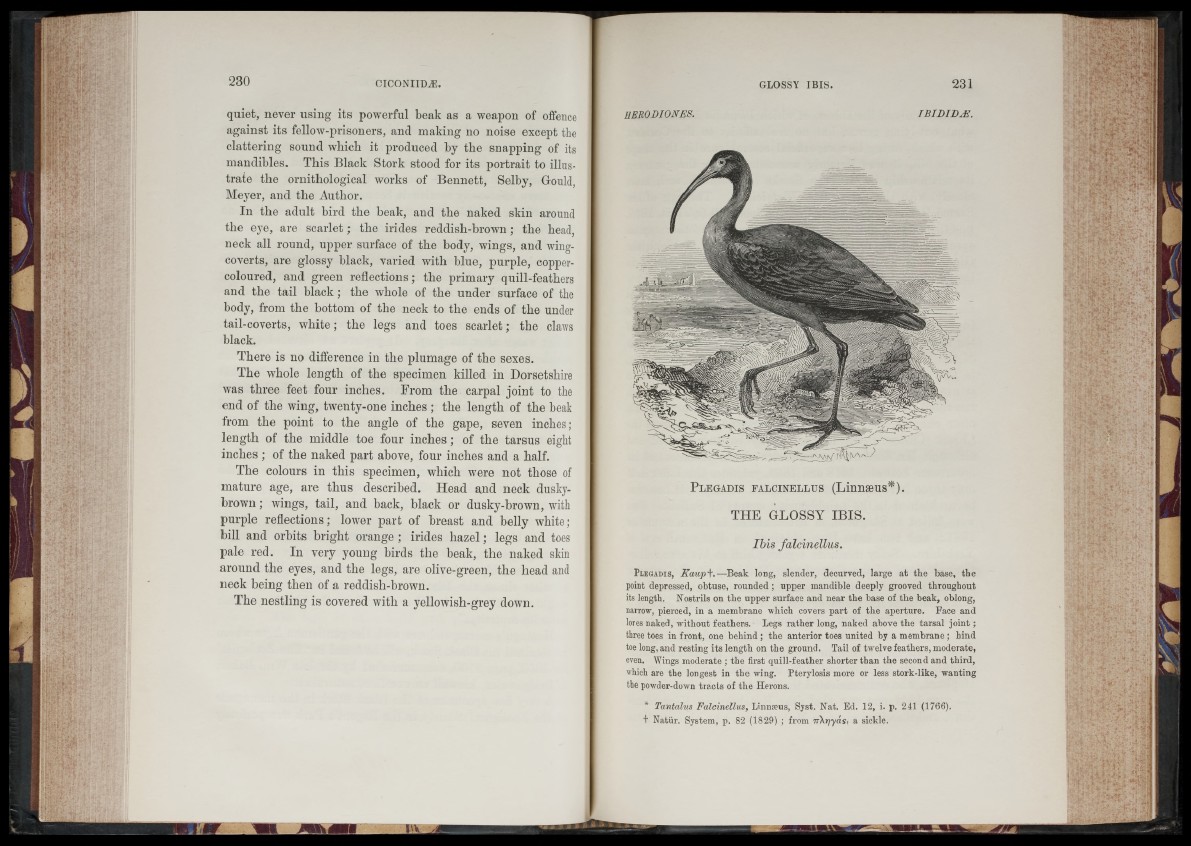
quiet, never using its powerful beak as a weapon of offence
against its fellow-prisoners, and making no noise except the
clattering sound which it produced by the snapping of its
mandibles. This Black Stork stood for its portrait to illustrate
the ornithological works of Bennett, Selby, Gfould,
Meyer, and the Author.
In the adult bird the beak, and the naked skin around
the eye, are scarlet; the irides reddish-brown; the head,
neck all round, upper surface of the body, wings, and wing-
coverts, are glossy black, varied with blue, purple, copper-
coloured, and green reflections; the primary quill-feathers
and the tail black ; the whole of the under surface of the
body, from the bottom of the neck to the ends of the under
tail-coverts, white; the legs and toes scarlet; the claws
black.
There is no difference in the plumage of the sexes.
The whole length of the specimen killed in Dorsetshire
was three feet four inches. From the carpal joint to the
end of the wing, twenty-one inches; the length of the beak
from the point to the angle of the gape, seven inches;
length of the middle toe four inches ; of the tarsus eight
inches ; of the naked part above, four inches and a half.
The colours in this specimen, which were not those of
mature age, are thus described. Head and neck dusky-
brown ; wings, tail, and back, black or dusky-brown, with
purple reflections; lower part of breast and belly white;
bill and orbits bright orange ; irides hazel; legs and toes
pale red. In very young birds the beak, the naked skin
around the eyes, and the legs, are olive-green, the head and
neck being then of a reddish-brown.
The nestling is covered with a yellowish-grey down.
HEROD I ONES. UNDID J i.
P l eg a d is f a l c in e l l u s (Linnseus*).
THE GLOSSY IBIS.
Ibis falcinellus.
Plegadis, Kaupt .—Beak long, slender, decurved, large at the base, the
point depressed, obtuse, rounded ; upper mandible deeply grooved throughout
its length. Nostrils on the upper surface and near the base of the beak, oblong,
narrow, pierced, in a membrane which covers part of the aperture. Face and
lores naked, without feathers. Legs rather long, naked above the tarsal joint;
three toes in front, one behind ; the anterior toes united by a membrane ; hind
toe long, and resting its length on the ground. Tail of twelve feathers, moderate,
even. Wings moderate ; the first quill-feather shorter than the second and third,
which are the longest in the wing. Pterylosis more or less stork-like, wanting
the powder-down tracts of the Herons.